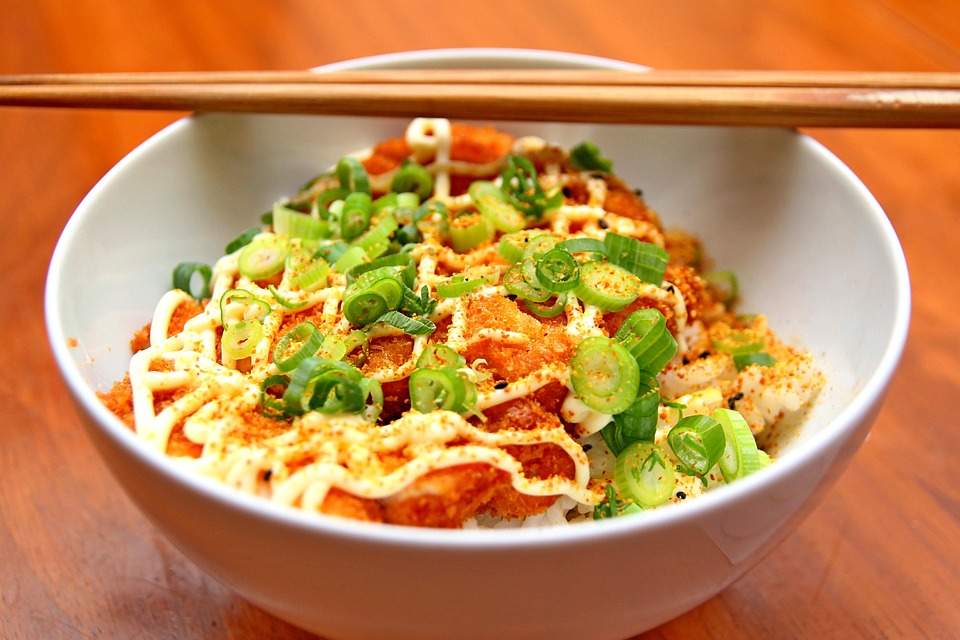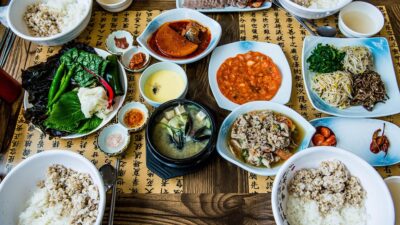Japan is a land steeped in tradition, where centuries-old customs blend seamlessly with modern influences, creating a unique cultural tapestry. Among the most cherished aspects of Japanese culture is its culinary heritage. From the delicate artistry of sushi to the soul-warming bowls of ramen, Japan’s cuisine tells a story of history, geography, and philosophy. This article invites you on a journey through the rich tapestry of Japan’s culinary traditions, celebrating flavors, techniques, and the deep-seated connection between food and culture.
The Four Seasons: A Culinary Calendar
Japanese cuisine is profoundly influenced by the changing seasons. Each season brings with it a bounty of fresh ingredients, prompting chefs and home cooks alike to adapt their dishes to highlight seasonal flavors.
-
Spring: Celebrated with cherry blossoms, spring dishes often feature fresh greens and young vegetables. Sakura mochi (sweet rice cakes wrapped in cherry leaves) and nanohana (rapeseed blossoms) are popular spring delights.
-
Summer: Light and refreshing dishes dominate this season. Hiyashi chuka, a chilled noodle dish topped with a myriad of colorful vegetables and proteins, showcases the vibrant produce of summer.
-
Autumn: As the temperatures cool, heartier fare becomes popular. Matsutake mushrooms and kabocha (Japanese pumpkin) often star in seasonal dishes. This season is also famous for moon-viewing parties, where people enjoy seasonal delicacies under the full moon.
- Winter: Comfort food takes center stage during the cold months. Nabe, a variety of hot pot dishes, encourages communal dining, bolstering familial bonds as people gather around steaming pots of soup filled with seasonal vegetables and proteins.
The Heart of Japanese Cuisine: Umami
At the core of Japanese cooking lies the concept of umami, often described as the fifth taste alongside sweet, sour, salty, and bitter. This savory flavor is primarily derived from ingredients such as dashi (a broth made from kombu seaweed and bonito flakes), soy sauce, miso, and fermented products. The skillful balance of these ingredients is what elevates Japanese dishes to a sublime level of taste.
By understanding and utilizing umami, cooks create harmonious flavors that resonate deeply on the palate, inviting a sense of satisfaction that lingers long after meals have ended.
The Art of Presentation: A Feast for the Eyes
In Japanese culture, food is more than sustenance; it is an art form. The meticulous presentation of dishes reflects seasonal beauty and emphasizes the importance of aesthetics in dining.
-
Kaiseki: This traditional multi-course meal showcases seasonal ingredients and meticulous presentation. Each dish is crafted not just for flavor but also for visual appeal, often incorporating beautiful ceramics and natural elements like leaves and flowers.
- Bento: The Japanese lunch box, known as bento, is a colorful representation of culinary art. Each compartment typically holds a different dish, beautifully arranged to create a balanced meal that is both nutritious and visually enticing.
Fermentation: The Soul of Japanese Cuisine
Fermented foods play a pivotal role in Japan’s culinary landscape. The mastery of fermentation has been passed down through generations, yielding flavors that are both complex and beneficial for health.
-
Miso: This fermented soybean paste is a staple in Japanese kitchens. It serves as the base for miso soup and is used as a marinade and condiment, offering deep flavors and health benefits.
-
Soy Sauce: Another essential, soy sauce is a complex blend of fermented soybeans and wheat, imparting umami notes to countless dishes.
- Tsukemono: Pickled vegetables, known as tsukemono, add flavor, texture, and color to meals. These pickles can vary widely by region and season, often accompanying rice and other dishes.
Culinary Traditions Meet Innovation
Modern Japanese cuisine continues to evolve while honoring traditional practices. Chefs are experimenting with fusion, global flavors, and innovative techniques, all while respecting the essence of Japanese culinary philosophy. The Michelin-starred restaurant scene in Japan is a testament to this blend of tradition and innovation, where chefs pay homage to classical dishes while creating new experiences for diners.
The Role of Food in Community and Connection
In Japan, food serves as a medium for social connection and cultural expression. Whether it’s gathering for a traditional New Year’s feast (osechi-ryori) or sharing a casual meal in a bustling izakaya, food brings people together. Festivals across the country celebrate local dishes, ingredients, and culinary techniques, fostering a sense of community and continuity.
Conclusion: A Taste of Heritage
As we traverse the diverse landscape of Japanese cuisine, it becomes apparent that the traditions of the past continue to influence modern-day practices. Each bite of sushi, every warm bowl of udon, and the delicate sweetness of wagashi (traditional sweets) reflect not just culinary skills but also a deeper connection to nature, culture, and community.
Savoring the essence of Japanese culinary heritage is more than about taste; it’s about experiencing a culture that values mindfulness, seasonality, and the bonds forged through shared meals. As we continue to explore and celebrate this rich heritage, we are reminded of the power of food to connect us to our roots and to one another.
References
- "Japanese Cooking: A Simple Art" by Shizuo Tsuji
- "The Food of Japan" by Tomo and Nicky Kwan
- Various culinary blogs and local food publications.



